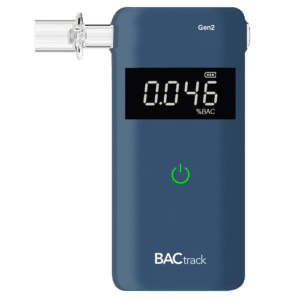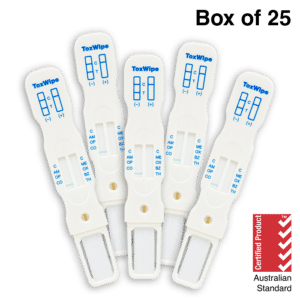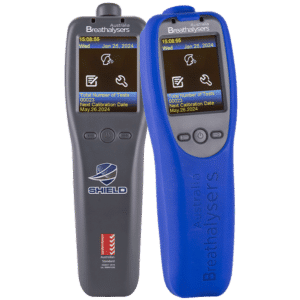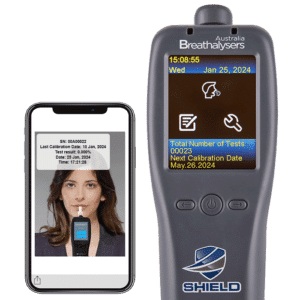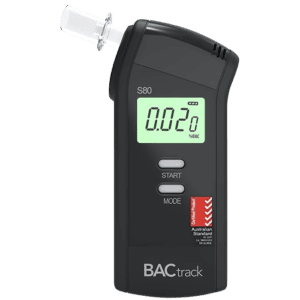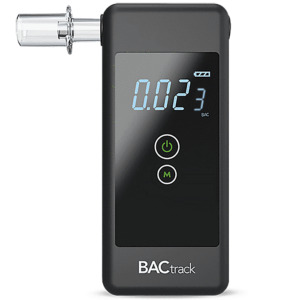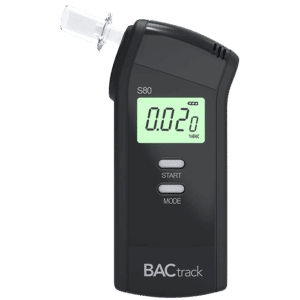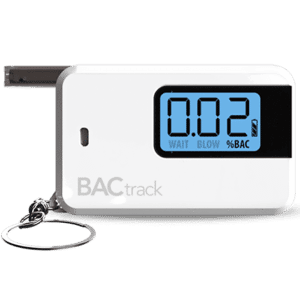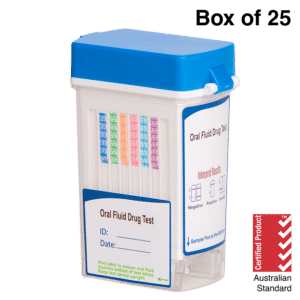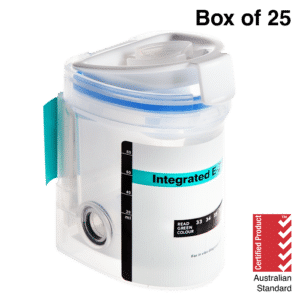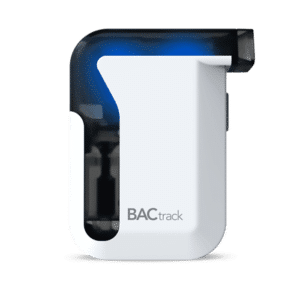HLTPAT005 – Collect Specimens for Drugs of Abuse Testing
14 May, 2024
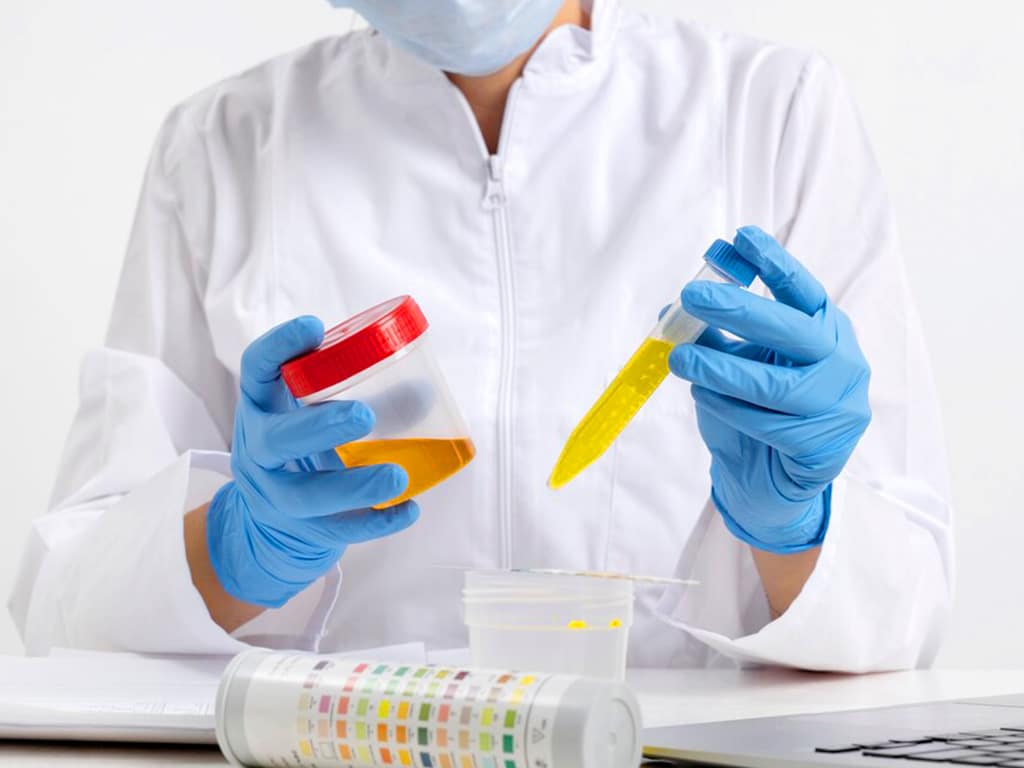
HLTPAT005 is a vital training course that focuses on teaching individuals the necessary skills and knowledge to conduct drugs of abuse testing. This unit is particularly important in industries where drug testing is a vital component of workplace safety and compliance. Through the course, participants will gain a thorough understanding of the principles of drug testing. It includes the proper sample collection process for different types of specimens. It also covers relevant regulations and standards governing drug testing procedures.
Substance abuse continues to pose significant health and safety threats to society. Thus, drug testing plays a crucial role in various settings, including healthcare facilities, workplaces, and law enforcement agencies. It aims to identify individuals who are under the influence of illicit substances. By determining substance impairment, organisations can make appropriate decisions to prevent safety risks leading to accidents or injuries. This article will present a comprehensive overview of the training course, including its prerequisites, scope, testing procedures and guidelines.
Jump to a Section:
- An Overview of the HLTPAT005 Drug and Alcohol Testing Course
- Prerequisites of the HLTPAT005 Training Course
- HLTPAT005: Understanding Drug Testing Procedures and Guidelines
- HLTPAT005: Knowing Collection Centres and Practical Assessment Requirements
- HLTPAT005: Identifying Legislative Requirements for Drug Testing in Health Care Settings
- HLTPAT005: Understanding Specimen Types and Collection Requirements
- HLTPAT005: Establishing Best Practices for Specimen Collection
- HLTPAT005: Comprehension of Quantitation of Drugs in Urine, Blood, or Oral Fluids
- Assessment Process of the HLTPAT005 Workplace Drug and Alcohol Testing Course
- What Happens After You’ve Completed the HLTPAT005 Drug and Alcohol Training Course?
An Overview of the HLTPAT005 Drug and Alcohol Testing Course
The HLTPAT005 Drug and Alcohol Testing Course is a unit of competency that teaches individuals the proper way to collect specimens for drugs of abuse testing. This course is designed to ensure that professionals are competent and can accurately handle specimens in a safe and reliable manner. It covers a wide range of topics, including the different types of drugs and legal aspects of testing.
The program is generally divided into classroom and practical components. During the course, participants will learn about different types of specimens for testing. They will also gain an understanding of the various testing methods and technologies to analyse the presence of drugs.
Moreover, one of the key aspects covered in the course is the importance of maintaining proper chain of custody procedures. It involves ensuring that the integrity of the specimen is maintained at all times. Participants will practice how to properly label, document, and transport the samples to minimise the risk of contamination or tampering. By completing the program, individuals will be able to get job roles related to drug and alcohol testing.
Benefits of Completing the Course
- Enhanced skills: Participants will gain proficiency in conducting drug and alcohol tests, including sample collection and analysis.
- Improved job prospects: Completing the course can open up new job opportunities in industries where drug testing is a requirement.
- Compliance: Understanding the legal aspects of drug testing ensures that procedures are in accordance with relevant legislation and regulations.
- Safety: Proper drug testing procedures help to identify individuals under the influence of substances, reducing the risk of accidents and ensuring a safe environment.
- Ethical standards: Develop a strong understanding of ethical considerations surrounding specimen collection, promoting integrity and trustworthiness in professional practice.

Prerequisites of the HLTPAT005 Training Course
Before enrolling in the HLTPAT005 Drug and Alcohol Testing training, there are certain prerequisites that individuals need to meet. It ensures that participants have a solid foundation of knowledge and skills necessary for the successful completion of the course. Firstly, they must have a good understanding of English, literacy, and numeracy (LLN). Learners must be able to communicate in both written and verbal forms.
Secondly, it is recommended that they have a healthcare background. Having a basic knowledge of anatomy, physiology, and medical terminology will be beneficial in understanding the content covered in the course. Also, students must have the physical capacity to use various testing equipment and complete assessment tasks.
Lastly, participants may be required to possess certain personal attributes or characteristics that are conducive to the success of the course. These may include attention to detail, the ability to follow instructions, and a commitment to upholding ethical standards and professional integrity. Overall, individuals must be able to complete the required number of hours of classroom training and perform practical assessments.
Qualifications, Experience & Knowledge Requirements
In order to become a qualified collector, participants must possess good communication skills and basic knowledge about drugs. They must be able to demonstrate expertise in all aspects of alcohol and drug testing. It includes showing a comprehensive understanding of various testing methods and equipment. In addition, they must be able to complete assessments with minimal errors.
Applicants should also display professional conduct at all times. This includes strict adherence to safety protocols and procedures, as well as demonstrating ethical behaviour throughout the process. Overall, meeting qualifications and gaining experience are essential to becoming a competent drug and alcohol testing collector.

HLTPAT005: Understanding Drug Testing Procedures and Guidelines
HLTPAT005 provides participants with a comprehensive understanding of drug testing procedures in various settings. Thorough knowledge of the correct procedures can help ensure the accuracy and integrity of the process. Individuals will learn that deviation from the standard practices affects the outcome of the test. For instance, it can lead to false results, potentially causing harm to the individual.
The course covers guidelines for specimen collection, handling and storage. Proper techniques are essential to maintaining the integrity of the sample and ensuring accurate results. Moreover, the guidelines provide a framework for conducting tests in a standardised and ethical manner. Therefore, it ensures that the steps are reliable and respectful of the rights of the individual.
Furthermore, an understanding of the test procedures helps professionals determine if there are any irregularities in the testing routine. Hence, they can make assessments or preventive measures to ensure the accuracy of results. In summary, participants will learn the necessary knowledge and skills to conduct alcohol and drug tests with precision and professionalism.
Learning Outcomes
Individuals will gain a comprehensive understanding of the various drug testing procedures upon completion of the course. They will learn about the different collection techniques and protocols for each type of test. It covers following the chain of custody requirements to prevent potential tampering or contamination.
Additionally, they will have a thorough background about different drug classifications and their effects on the body. Participants will learn how to identify commonly abused substances and understand their impact on the health and well-being of a person. By adhering to the established guidelines, collectors can uphold the integrity of the test.

HLTPAT005: Knowing Collection Centres and Practical Assessment Requirements
Collection centres comply with the national guidelines for drug and alcohol testing. This requirement ensures consistency and reliability across various situations or settings. To maintain standards, they require new sample collectors of certification of HLTPAT005 training. Graduates gain the minimum requirements that laboratories and testing centres are looking for when hiring test officers.
The practical assessment of the course includes hands-on practice in specimen collection, handling, and storage. It involves following hygienic practices in preparing the testing devices and the collection area. Moreover, the evaluation is done in a realistic or simulated testing environment. Thus, they must be able to follow the correct procedures and demonstrate professionalism in various procedures.
By engaging in hands-on training, participants can gain confidence in their ability to perform pre-collection to post-collection procedures. Regular practice can help them prepare for the final evaluation. Likewise, practical experiences can enhance their readiness in different situations. Therefore, students will be able to apply theoretical knowledge to real-life scenarios.
Learning Outcomes
- Understand the practical assessment requirements when collecting specimens for drugs of abuse testing.
- Students will gain the basic skills required by accredited collection centres on how to conduct drug and alcohol testing.
- The skills include not just performing laboratory testing but also how to administer the test in on-site or workplace settings.
- Participants will be able to communicate with clients in a respectful manner.
- Students can confidently handle test samples, apply the proper safety protocols, and adjust to special procedures.
- They will be aware of the national standards for drug and alcohol testing, codes of practice, and how to interpret the results.

HLTPAT005: Identifying Legislative Requirements for Drug Testing in Health Care Settings
The HLTPAT005 course considers the legislative requirement for drug testing in primary care settings. It is particularly crucial as medical facilities have a responsibility to ensure the well-being of their patients. The module familiarises participants with relevant laws, regulations, and policies governing drug testing practices in healthcare contexts. Some common legislation that may apply are the Occupational Health and Safety (OHS) Act, privacy laws, and federal laws.
Medical centres conducting workplace drug testing must be knowledgeable about the OHS Act. The regulation aims to protect the health and safety of workers. Thus, a company policy includes provisions for alcohol and drug screening in certain situations to ensure a hazard-free work environment. In relation, the policy applies to specific state and federal laws, depending on the jurisdiction and nature of the industry.
Lastly, healthcare facilities must comply with privacy laws to protect the confidentiality of medical information or records of patients. It includes the results of the drug test, as this can be sensitive information. Thus, learners need to understand the legal obligations surrounding consent and confidentiality.
Learning Outcomes
Upon completing the program, students have a broad background in legislation related to drug and alcohol testing. They will learn how to administer tests while following privacy regulations. Moreover, they become aware of the potential consequences of not following the testing standards. It includes releasing the results only to the concerned individual or authorised personnel.
Individuals will also become familiar with the ethical aspects of drug testing. Aside from privacy and confidentiality, they must also have no bias or judgment. For example, they must maintain a presumption of innocence until the final analysis is complete. This can help avoid misunderstandings and legal challenges.

HLTPAT005: Understanding Specimen Types and Collection Requirements
The HLTPAT005 course provides training in urine, oral fluid, and breath samples. Each type has its own advantages and limitations. Firstly, urine testing is the most commonly used specimen for detecting drugs. It is non-invasive and has a wide window of detection for most substances. Testing centres may use certified urine test cups to collect and analyse the sample. It allows them to screen individuals on-site.
Secondly, oral fluid screens involve the collection of saliva samples, typically through a mouth swab. A qualified drug collector brushes the inner cheek with an absorbent pad to obtain the specimens. This type of test can trace illicit substances within 24-48 hours after use. Its shorter detection window is suitable in situations where recent drug use needs to be detected quickly.
Lastly, breath testing measures alcohol concentration in the breath. It is commonly used to detect alcohol impairment in workplace settings. It utilises a certified breathalyser device to analyse the breath sample. This method is non-invasive and provides instant results. It is important to note that it only detects alcohol consumption and not other substances.
Learning Outcomes
Each specimen type requires specific collection techniques and testing guidelines. Students will know how to conduct each type of test and the considerations involved. They will also learn the advantages and limitations of each type and use this knowledge to make informed decisions. It is crucial to select the most appropriate specimen type based on specific testing requirements.
Additionally, trainees will become knowledgeable on the various factors that may influence the test results. This includes the presence of external contaminants, prescription medications, and certain medical conditions. Therefore, proper handling of the test specimens from the point of collection is vital.

HLTPAT005: Establishing Best Practices for Specimen Collection
HLTPAT005 encourages best codes of practice for specimen collection and testing. It equips trainees with the necessary skills to administer drug and alcohol tests. It includes setting a secured location away from substances that may interfere with the results. For example, a mobile facility should be clean, private, and without cleaning agents in the vicinity.
Students will learn the specific protocols to ensure reliability in the collection process. Standard operating procedures outline the step-by-step instructions for collecting, handling, and storing specimens to minimise errors or risk of contamination. The importance of uniformity in the sample collection ensures the reproducibility of test results.
Furthermore, they must follow the chain of custody for each type of specimen. It refers to the chronological documentation and paper trail of the sample from the time of collection until it reaches the laboratory for analysis. An essential factor is the security of the samples, such as maintaining correct temperatures and storage conditions. By establishing best practices, participants can uphold the integrity and validity of the testing process.
Learning Outcomes
- Participants will learn the necessary measures before proceeding with the sample collection, such as securing the testing site.
- Follow correct protocols for collecting specimens and instruct subjects on how to provide the samples correctly.
- Identify potential factors that may interfere with test outcomes. Thus, they may be able to manage these factors and minimise the risk of inaccurate results.
- Trainees will be familiar with the chain of custody requirements to enhance the admissibility of the test result.
- They will learn the relevant laws that regulate onsite testing and the significance of legal compliance.
- Trainees can communicate the drug test results with confidence.

HLTPAT005: Comprehension of Quantitation of Drugs in Urine, Blood, or Oral Fluids
In HLTPAT005 training, students will not only tackle specimen collection but also the quantitation of drugs and alcohol. It refers to the process of measuring the concentration of substances or drug metabolites in urine, oral fluids, and breath samples. The common techniques for drug quantitation involve immunoassays, chromatography, and mass spectrometry.
Furthermore, each test method identifies a cut-off level depending on the drug class. This refers to the minimum concentration of a drug in the sample to generate a positive result. For urine and saliva tests, it is calculated based on nanograms (ng)/mL. For breath alcohol tests, the measurement is based on the volume of alcohol in grams per 100 mL of blood. The result is called the Blood Alcohol Concentration (BAC) level and is expressed in percentage.
However, various factors can impact the accuracy of the test. For instance, temperature control and cross-reactivity may lead to false positives or false negatives. In addition, the course will cover quality control measures to ensure the test integrity. Overall, understanding these factors is crucial for measuring the presence of substances in the system.
Learning Outcomes
At the end of the course, students will learn how to examine various specimens to identify and measure drugs and alcohol. They will also learn about the cut-off levels and sensitivities of the testing instruments. This provides them with a comprehension of how the test works to interpret the results.
Moving forward, trainees will gain a thorough understanding of quality control measures in drug testing procedures. It includes knowledge of when and how to calibrate testing equipment. By taking different factors into account, collectors or testing professionals can use the appropriate method to detect impairment or substance abuse.

Assessment Process of the HLTPAT005 Workplace Drug and Alcohol Testing Course
The assessment process of the HLTPAT005 Testing course involves classroom and practical examination. It is designed to evaluate the learnings of the students regarding key concepts and skills in the program. It aims to ensure that participants acquire the competencies and proficiencies to perform workplace drug and alcohol testing effectively.
The assessment methods encompass a range of activities, including written assessments, practical demonstrations, and simulated scenarios. In the first part, students undergo written assessments to evaluate their theoretical knowledge. It may include multiple-choice questions, short-answer questions, and case studies. It gauges their ability to recall and apply relevant information, analyse situations, and make informed decisions.
For practical training, students must display their ability to collect samples in accordance with set procedures. It involves following safety protocols, preparing materials, and storing the samples. They must also handle specimens according to the chain of custody to avoid contamination or degradation. Throughout the process, participants are evaluated on their adherence to industry standards, regulatory compliance, and best practices for drug and alcohol testing.
Student Workbook Practical Assessment Tasks
At the beginning of the course, students will receive a workbook outlining the tasks for successful training. All tasks must be completed within a specified time, regardless of if they are in a classroom or online learning. It aims to provide hands-on experience and practical skills in conducting the test in a workplace setting.
Participants will also develop and demonstrate proper techniques for sample collection and the chain of custody process. Additionally, they must be able to interpret the test results accurately. By engaging in these tasks, individuals develop a deep understanding of the procedures and why specific measures are necessary.

What Happens After You’ve Completed the HLTPAT005 Drug and Alcohol Training Course?
After successfully completing the HLTPAT005 Drug and Alcohol Training Course, individuals earn the certification of a qualified collector. Various employment pathways can open up to them, including becoming a workplace drug and alcohol tester, drug testing coordinator, or supervisor. They can work in industries such as transportation, healthcare, construction, and mining, where workplace safety is paramount.
Moreover, individuals may choose to further their education and training in the field of drug and alcohol testing. This could include pursuing advanced courses or certifications for professional development. They may also choose to establish their own independent consulting or testing services, providing expertise and assistance to organisations seeking to implement or enhance workplace drug and alcohol testing programs.
Furthermore, certified individuals must maintain their certification through periodic refresher courses. Maintaining their certification ensures that they stay updated with the latest advancements in drug testing or legislation. With the knowledge and skills acquired from the training program, individuals can contribute to maintaining a safe and drug-free work environment.
Employability and Career Paths
- Those who pass the training can work in a healthcare setting as a collector or laboratory technician.
- The qualifications extend to the fields of law enforcement, transportation, and other high-risk sectors implementing a health and safety program.
- Opportunities to work in rehabilitation centres, providing support and assistance to individuals struggling with substance abuse.
- Work as an in-house test administrator, coordinator, or safety advisor overseeing drug and alcohol testing programs of a private company.
- Assist organisations in developing a comprehensive workplace policy that adheres to relevant laws.
- The possibility to specialise in specific areas, such as forensic testing or workplace screening.
Conclusion
The HLTPAT005 Collect Specimens for Drugs of Abuse Testing is a comprehensive program to train individuals to become qualified collectors in toxicology screening. It requires minimum prerequisites to join the program. The course outlines the collection and analysis of urine, oral fluid, and breath testing procedures. Additionally, it covers comprehensive knowledge of the various drug classes, their effects, and other characteristics. It also encompasses legal and ethical considerations, especially for healthcare and workplace drug and alcohol testing.
By successfully completing this course, individuals will have a thorough understanding of the entire alcohol and drug testing landscape. Moreover, earning the certification can open up various opportunities in the testing industry. Individuals can work for drug test agencies, medical centres, rehabilitation, and workplaces. Overall, completing the drug and alcohol training course can lead to a fulfilling career in ensuring workplace safety and promoting a drug-free environment.















